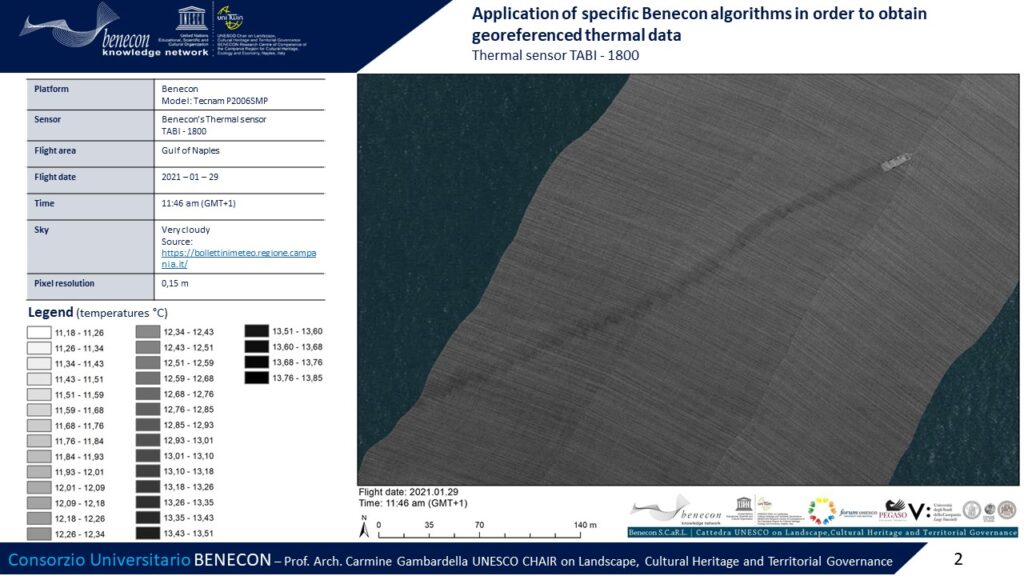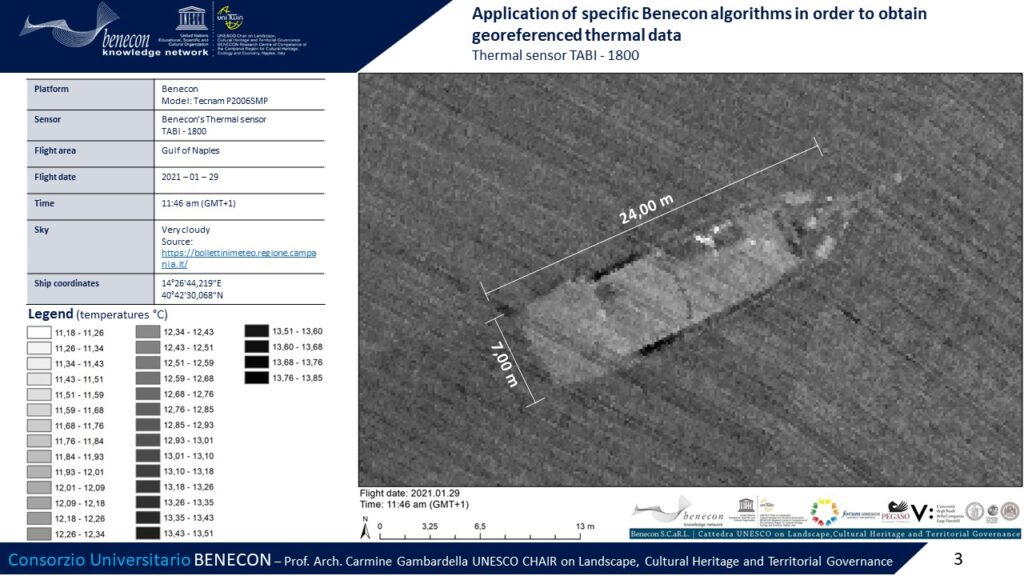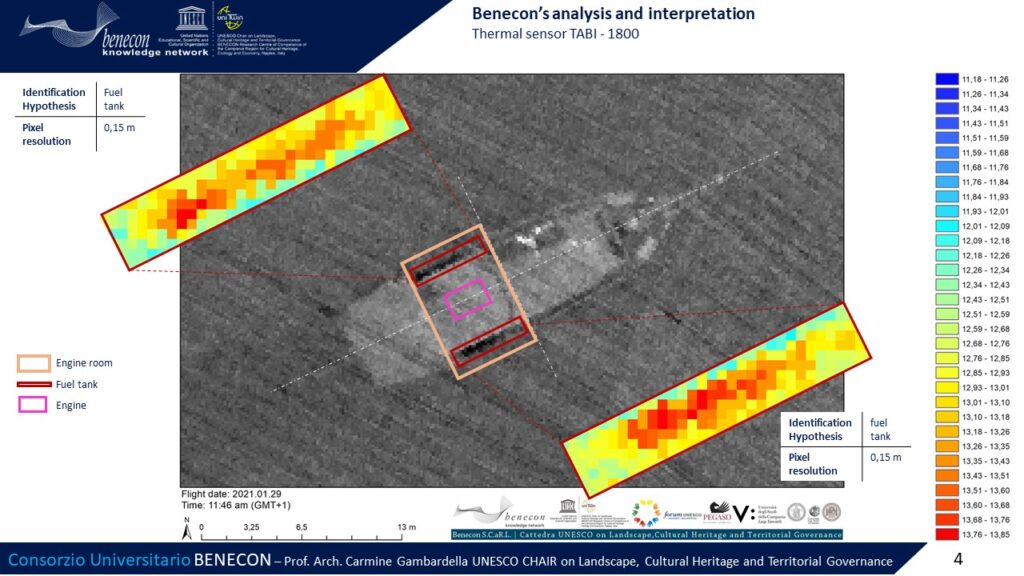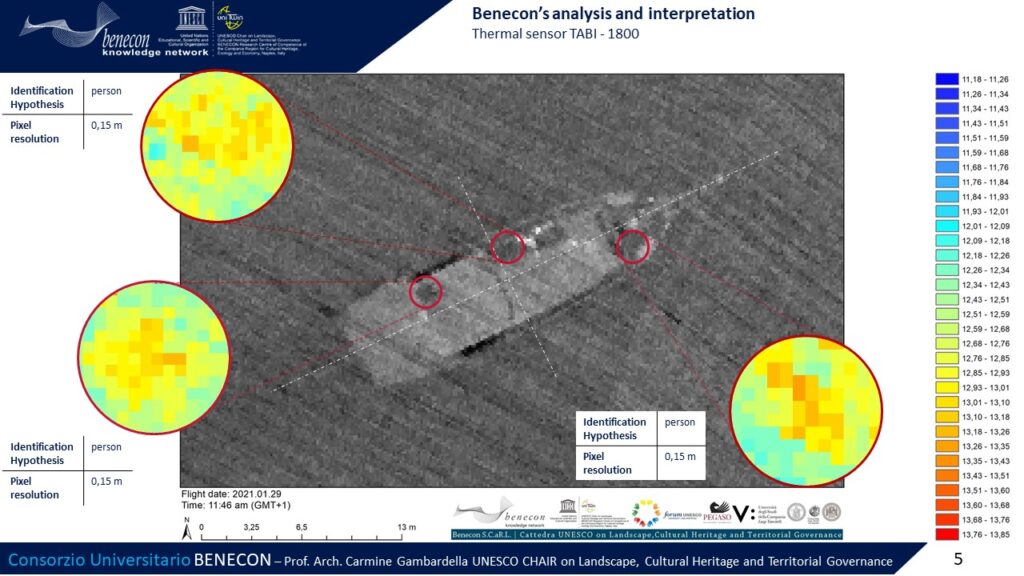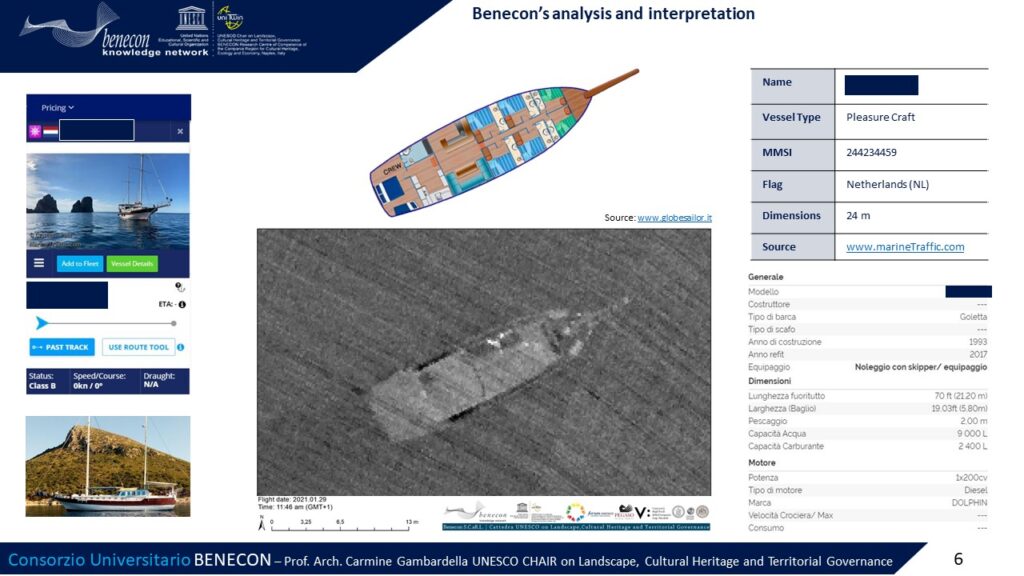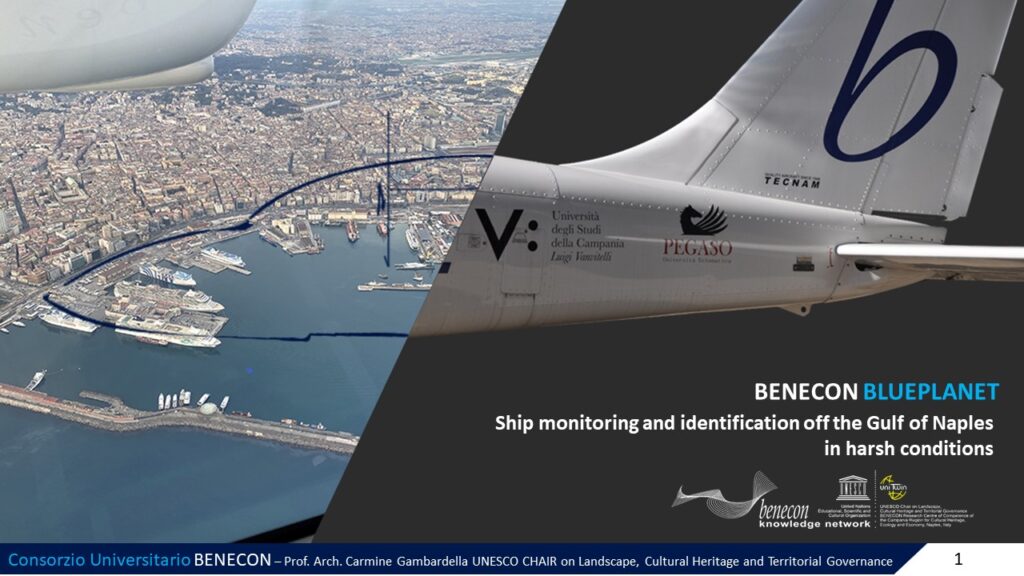
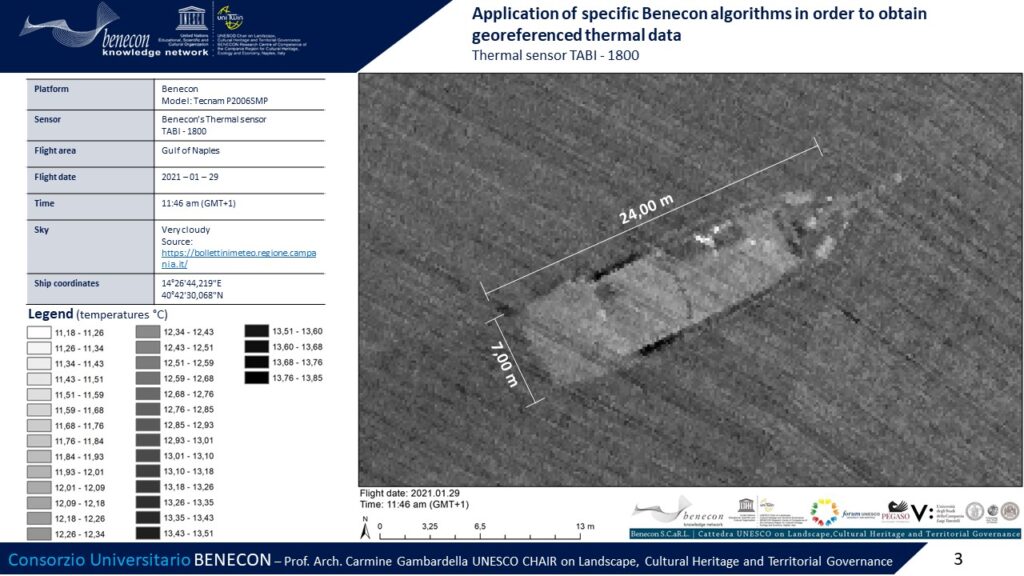
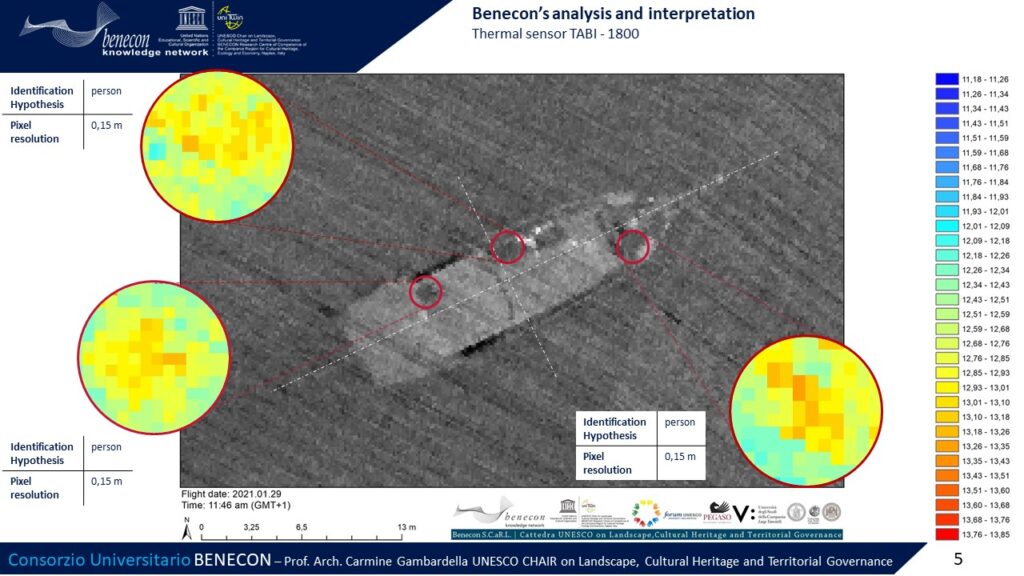
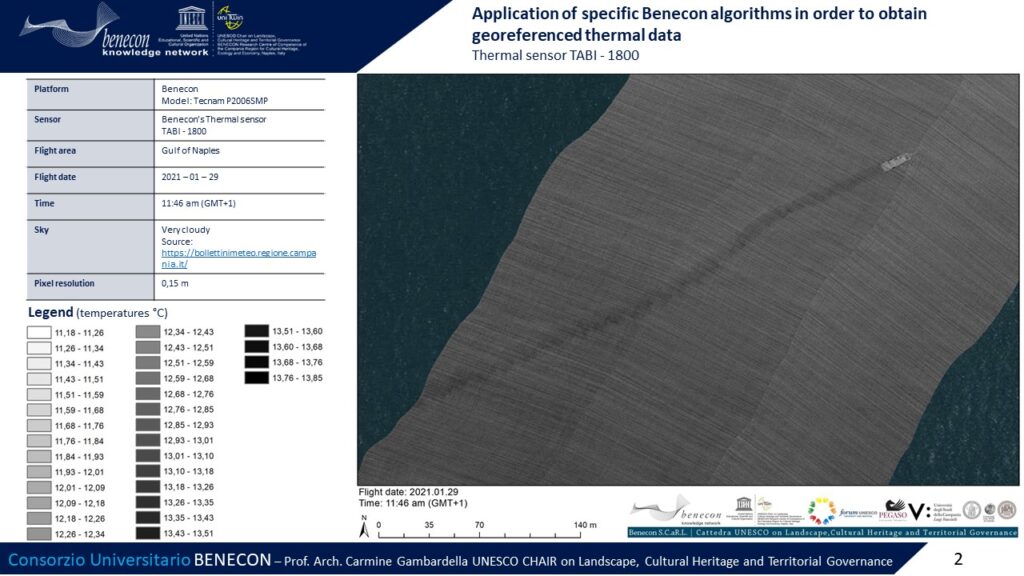
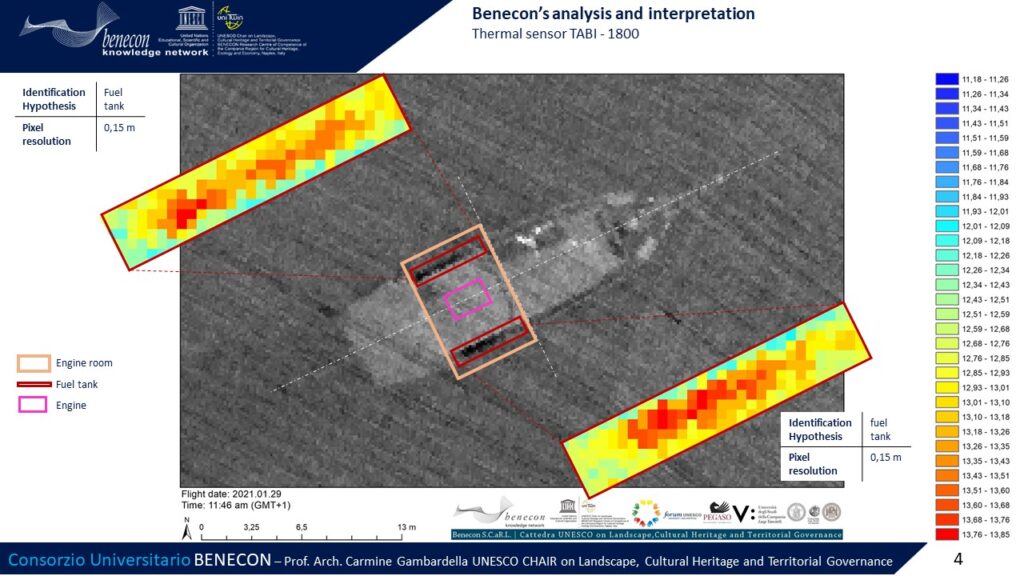
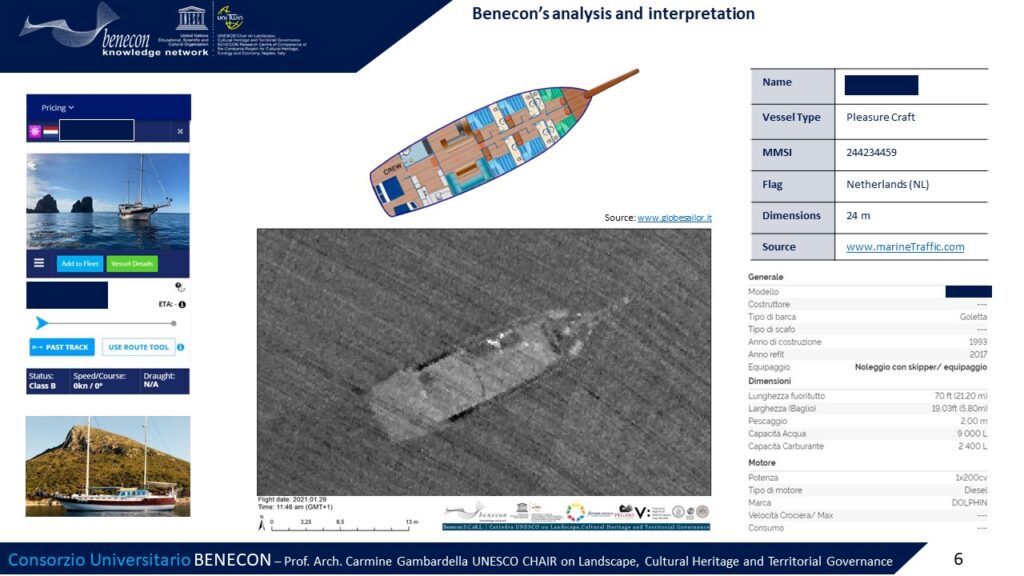
Benecon’s technologies and knowhow applied in harsh conditions.
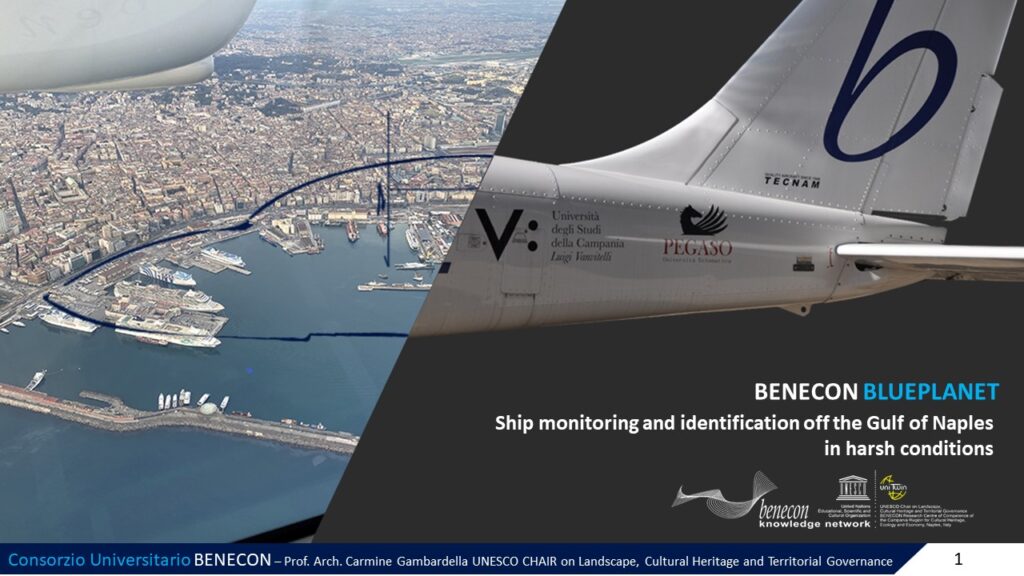
It is known that to use Thermal sensors at their best the acquisition must be done in good weather conditions but what if there is an emergency and the weather is not that clear?
Benecon’s mission of the 29th of January was to test the performances of the thermal Itres TSR-1800 sensor mounted on the Consortium’s aircraft, model Tecnam P2006T SMP, in harsh conditions.
The main strikes were the ships off the Gulf of Naples, to recognize the vessels model and to identify them.
Considering the forecasts and the flight conditions, Benecon’s researchers designed a specific flight plan over the Gulf with a pixel resolution of 0,15m.
All the safety conditions were respected. At the moment of the acquisition the sky was cloudy with humidity over the 85%.
This latter is the reason why in the images there is some “noise” (the diagonal stripes from north west to south east). The water column between the sensor and the sea surface created, indeed, the phenomenon of reflection of the light causing a loss of clearness in the acquisition data.
Anyway, the mission can be considered successful. Thanks to the small pixel resolution, the extremely precise radiation and geographical correction and the elaboration of greyscale and false colour features in GIS environment has been possible to recognize the vessel type and its parts, such as the engine room and the fuel tanks, and make hypothesis about the number of the crew members.
Moreover, after some crossed checks on open sources website it has been possible to identify the vessel name, the MMSI and the flag.
